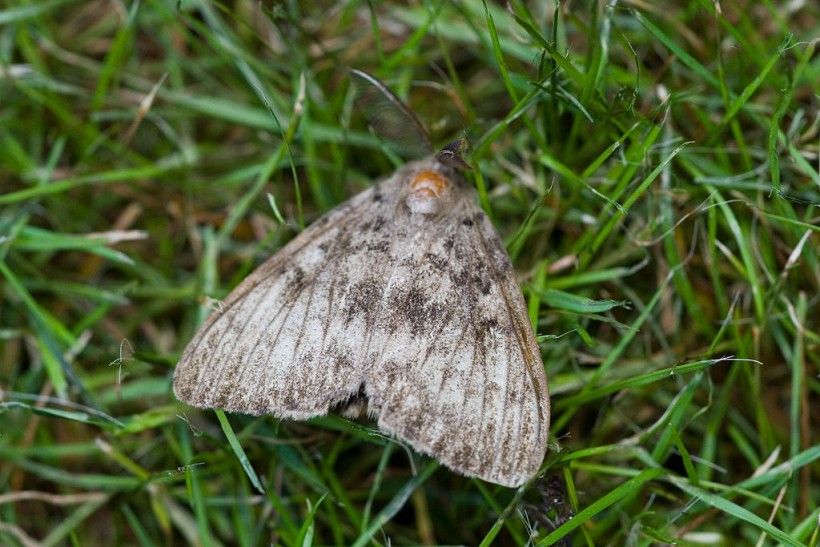What's in a Name? An Introduction to Using Scientific Names

One of the quickest ways to disengage someone trying to learn local flora and fauna is to use the Latin scientific name when naming a species. However, it is a fundamental starting point when learning a new species, as common names can vary by country and can also be used to refer to more than one plant species. Read on to learn how scientific names are determined, when and why some names change, and ways you can get involved in renaming inaccurate or problematic common names.
Breaking down scientific names
All living organisms are classified with different degrees of relatedness. In the plant kingdom, the various levels of classification include phylum, class, order, family, genus, and species. The genus and species names together comprise the scientific name that every plant (and animal, too) is given when first described by a scientist. These species names are recognized by scientists no matter where you go in the world.
A scientific name consists of two words and is therefore referred to as a “binomial.” By convention, the name is printed in italics. The first word represents the larger group the plant or animal belongs to, the genus (plural genera), and the first letter is always capitalized. The second word is the species (both singular and plural) and is always lowercase. There cannot be more than one identical species name in each genus. The species name is often, but not always, descriptive of some aspect of the plant.
Unfortunately, even using Latin names poses challenges. For example, there are around 380,000 species of vascular plants, but over a million scientific Latin names for these at species level. These multiple names arise because plant species can be described and named by different people at different times and different places. Scientific Latin names also change when botanists re-evaluate a plant’s evolutionary relationships and place it in a different genus.

Tips and Tricks
Learning and using Latin names seem to intimidate a lot of people, but it really shouldn’t. In fact, you already use many Latin names when naming plants: Begonia, Clematis, Crocus, Delphinium, Forsythia, Gardenia, Geranium, Ginkgo, Hibiscus, Hosta, and Iris. Other well-known names are close to the scientific name, such as Heliotrope (Heliotropium), peony (Paeonia), or rose (Rosa). Think about it like learning the name of a new friend. Just like people, plants have two names, but their last name comes first. The genus is kind of like our family name and the species the given name. So, the plant commonly called red maple, is maple, red in Latin—Acer rubrum. In the same “family” are silver maple (Acer saccharinum), box-elder (Acer negundo), sugar maple (Acer saccharum) and about 115 other species.
You can gradually learn botanical names by reading them in books or catalogues, where the Latin name and common name are side by side. Try to interchange one for the other at times, especially at nurseries or in public gardens where the plants are labeled. When first learning botanical names, don’t worry about what the names mean—plant names don’t always tell you something useful about the plant anyway. Just add these words to your vocabulary and use them when you can, just like any other word. You wouldn’t worry about what “Joe Smith” means—you just remember his name and what he looks like. Don’t be too concerned about the endings of the adjective words; remember the root of the word, and you can figure out the other part by comparing it to the ending of the genus. As you’re memorizing these names, keep in mind that every botanical name refers to one and only one plant. When you use these word combinations, others will generally understand what you mean, even if you don’t get the name exactly right.

When and Why Some Names Change
Memorizing scientific names can be an exhausting experience for nature lovers, especially when learning that those names occasionally change for complicated reasons. Some of the most common ways scientific names change is based on the law of priority, a rule stating that the first name validly published for a species is the correct name for it.
The rules of botanical nomenclatures are formalized in the International Code of Nomenclature (ICN), which is updated every five years at the International Botanical Congresses; the most recent such congress took place in Melbourne, Australia in 2011. Although the ICN defines the rules for naming plants, it does not provide guidance for determining if a species is distinct from other published species, thus justifying a new name. The taxonomic validity of species is determined by reviewers of scientific papers in which names are either proposed or changed, as well as by the acceptance of the names by the scientific community in their scholarly works such as Floras.
There are two primary resources used by botanists for finding out the correct spelling of a name: the authors who published it, and the journal in which it was published. These are TROPICOS, an online database of the Missouri Botanical Garden and the International Plant Name Index (IPNI) maintained by the Royal Botanic Gardens, Kew.
The most frequent causes behind a name change are when an earlier published name is discovered for a currently used name; a species is moved from one genus to another genus; and a name that was published at one level is changed to another level in the taxonomic hierarchy. The basic rules followed for these cases are that a plant species can only have a single name, and that the first name published should be the accepted name. Nevertheless, the ICN allows exceptions to the Code if applications of the rule cause major inconvenience to the end users. In that case, the names of families, genera, and species can be “conserved” or “rejected” over a name that has priority. This only happens after a proposal is submitted and accepted by the ICN, one that includes a detailed statement of the cases both for and against conservation or rejection. The proposal must then be published in Taxon, the journal of the International Association for Plant Taxonomy.
The most common reason for changing a species name is that the same species is described more than once by botanists. This was common in early botanical exploration, when nearly every collection represented a species that has never been collected and formally described. For example, a French botanist could publish a species name based on collections from French Guiana, while an English botanist could give the same species a different name based on collections from Guyana. As a result, there are often many names applied to the same species, but it is the first name published for it that is the accepted name. All subsequently applied names are then considered synonyms of the first published name.

Better Common Names Project
Lately, there has been a lot of discussion and changes regarding the common names for a variety of flora and fauna. This can be best described by the Entomological Society of America's (ESA) Better Common Names Project which aims to ensure that common names are respectful, inclusive, and accurately descriptive.
In 2021, ESA adopted new policies for insect common names to be accepted into the ESA Common Names of Insects and Related Organisms List. The updated criteria bar names referencing ethnic or racial groups and names that might stoke fear; the policies also discourage geographic references, particularly for invasive species.
The criteria are applied to all newly adopted common names, and the Better Common Names Project is tasked with reviewing existing insect common names and guiding adoption of new names to replace those that no longer meet ESA's current common name policies.
Entomologists want effective communication with the public, policy makers, and other scientists. Effective communication can help advance science, advance entomology, and increase the flourishing of humans and the environment.
Common names of insects were formally recognized in the early 20th century to help bridge communication between those who study insects and those who don't. However, not all common names accepted over the past 120 years align with the goal of better communication, and some hinder it. Examples include (but are not limited to):
- Names that contain derogative terms
- Names for invasive species with inappropriate geographic references
- Names that inappropriately disregard what the insect might be called by native communities
These problematic names perpetuate harm against people of various ethnicities and races, create an entomological and cultural environment that is unwelcoming and non-inclusive, disrupt communication and outreach, and counteract the very purpose of common names.
To address problematic common names, ESA created a task force charged with spurring action in the entomology community. The task force developed a process called the Better Common Names Project.
Here's how the project works:
- Solicit community input. What names do you think need to be changed? Have you, your community, or others been negatively affected by a common name?
- Recruit working groups. After reviewing community feedback, the task force will note the names most in need of changing and recruit working groups of people who study or work with those insects to propose new names.
- Create and submit proposals. Groups will work with their communities to research new names, build consensus for new names, and submit final proposals for new names that fall within ESA's common names policies.
- Review proposals. Proposals will be reviewed by the ESA Common Names Committee, and accepted proposals will then go to a member comment period for 30 days.
- Final approval. After the member comment period, proposals can be adjusted as needed. Otherwise, final proposals are submitted to the ESA Governing Board for final approval.
Three Ways You Can Create Change Right Now
- Tell us what insect common names should be changed.
- Volunteer to be on a working group to propose a new name. On the form, mark your interest in joining a working group.
- Show your support for the project. Do you want to see a more inclusive ESA Common Names database? Help spread the word about this project on social media or in person.
A Better Future
By participating in the Better Common Names Project and helping to change problematic common names of insects, you will help ensure that insect common names are respectful, inclusive, and descriptive of the insect. Using better common names will increase the effectiveness of communication with the public, enhance the reputation of entomology and entomologists, build a more inclusive discipline, and reduce harm to our members and non-members alike.